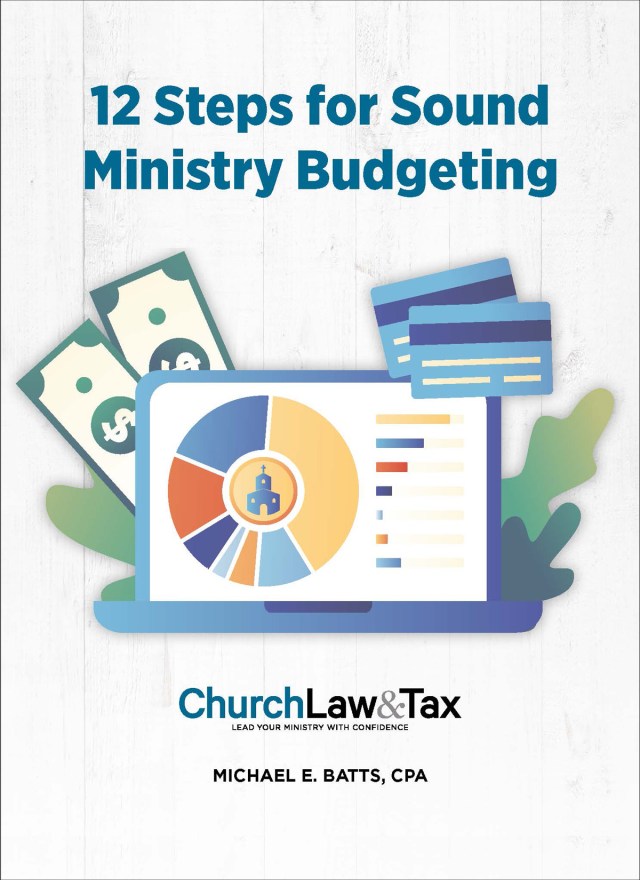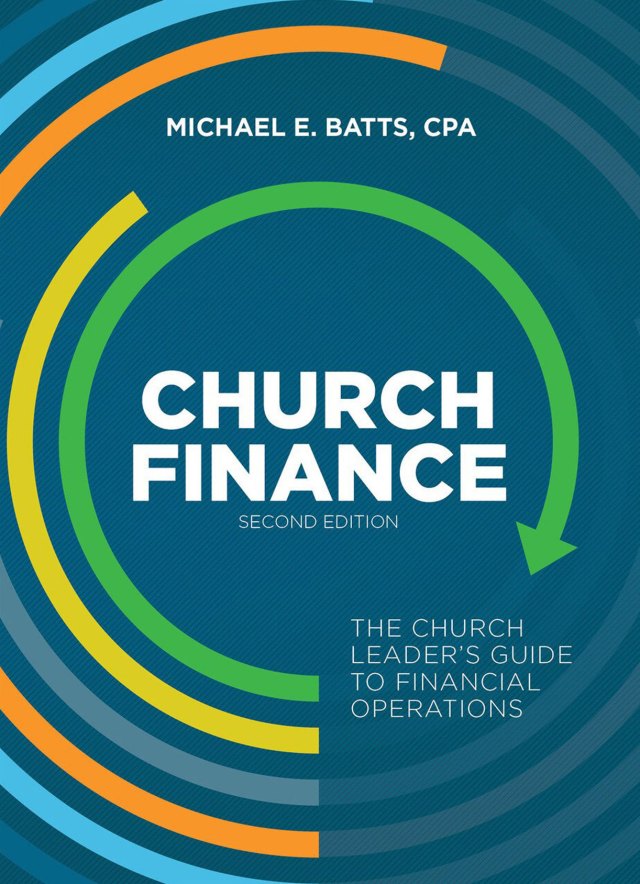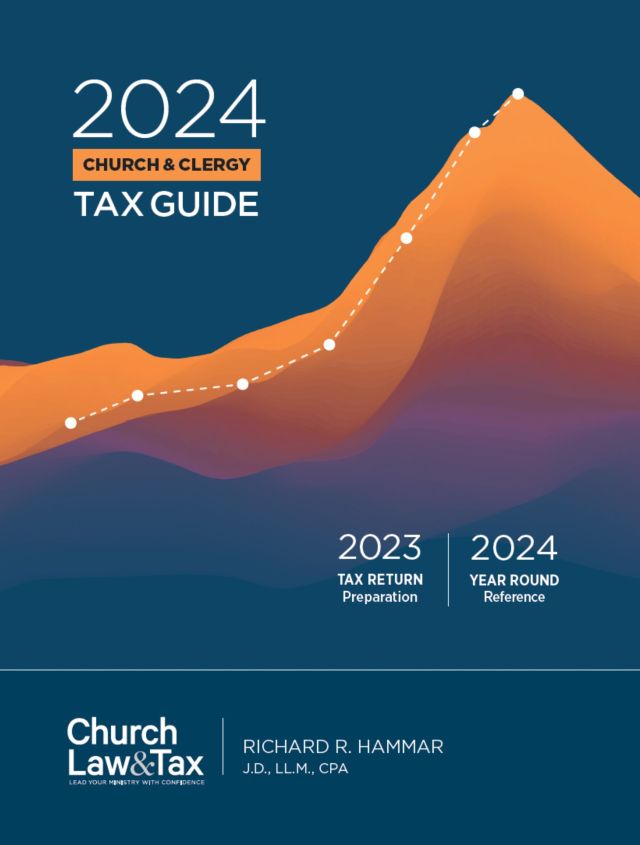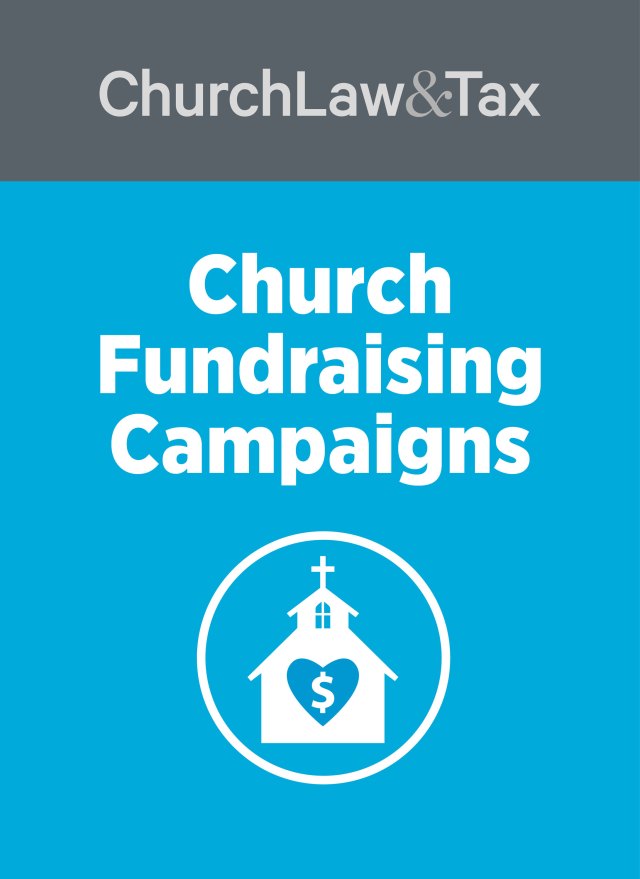In mid-December, the US Congress passed the Consolidated Appropriations Act of 2021 (“CAA” or “Act”), which included another $900 billion in stimulus efforts tied to the COVID-19 pandemic. On December 27, 2020, President Trump signed the CAA into law. This article summarizes a number of provisions in the 5,593-page Act that are important to nonprofit organizations, including churches and church-related or private religious schools.
PPP Second Draw Loans
The CAA creates an extension of the Paycheck Protection Program (PPP) loan program with different eligibility requirements, which are outlined below. An additional $284 billion is available through these PPP Second Draw Loans.
Eligible borrowers
Before taking into account other limiting factors, note that eligible PPP Second Draw Loan borrowers include any:
- Business concern;
- Nonprofit organization (including a church);
- Housing cooperative;
- Eligible self-employed individual;
- Sole proprietor; or Independent contractor.
A prior recipient of a PPP loan may apply for a PPP Second Draw Loan. However, an otherwise eligible applicant must also meet the following criteria:
- Employ no more than 300 employees (this is a reduction from the 500 employees specified in the CARES Act passed back in March of 2020);
- Have experienced a year-over-year reduction in gross receipts of not less than 25 percent when comparing any selected 2020 quarter to the equivalent 2019 quarter, excluding any funds received from a first PPP loan (note that the CAA has additional relevant details for entities that commenced operations in 2019 or between January 1, 2020, and February 15, 2020);
- Not be otherwise excluded from receiving a US Small Business Administration (SBA) loan under other federal law (Chapter 13, Section 120.110 of the Code of Federal Regulations (CFR));
- Not be engaged primarily in political or lobbying activities (which includes think tanks);
- Not be owned by an entity formed in the People’s Republic of China or Hong Kong and which owns not less than 20% of the economic interest of the otherwise eligible borrower;
- Not have as a member of its board of directors a person who is a resident of the People’s Republic of China; and
- Not be a publicly traded company.
Maximum loan amount
The maximum PPP Second Draw Loan amount is computed as 2.5 times the average total monthly payment for payroll costs during 2019 or the one-year period before the loan is made, not to exceed $2 million.
For entities that began operations between February 15, 2019, and February 15, 2020, the maximum PPP Second Draw Loan amount is computed by first dividing the total monthly payments for payroll costs by the number of months in which those payroll costs were incurred or paid and then multiplying this quotient by 2.5, not to exceed $2 million.
Forgiveness of PPP loans of $150,000 or less
For PPP loans that do not exceed $150,000, including both PPP loans issued under the CARES Act and PPP loans issued under the CAA, borrowers may obtain forgiveness by submitting a certification to the lender which:
- Is not more than one page in length;
- Only requires the borrower to provide:
- A description of the number of employees the borrower was able to retain because of the PPP loan;
- The estimated amount the borrower spent on payroll costs; and
- The total loan value.
Further, the borrower must certify that it accurately provided the required certification and complied with the PPP loan statute and regulations issued by the SBA. Finally, the borrower must retain employment records that prove compliance for four years and all other relevant records for three years. The borrower may voluntarily provide certain demographic information.
Church eligibility for PPP loans
The CAA makes clear that the SBA’s prohibition on making loans to religious organizations does not apply to PPP loans. In addition, the CAA expresses the sense of the Congress that the SBA’s previously issued Interim Final Rule properly clarified that the SBA’s affiliation rules do not apply to churches and religious organizations, where the application of those rules would substantially burden their free exercise of religion.
PPP loan forgiveness and EIDL grants
The CAA repeals the CARES Act provision requiring that any EIDL grant received would reduce the amount of PPP loan forgiveness.
Covered period redefined
The PPP loan Covered Period is redefined to begin on the date the loan originates (the date of a PPP loan’s first disbursement from the lender to the borrower) and end on a date selected by the borrower that is between the last day of the 8th week following the loan origination date and the end of the 24th week following the loan origination date. This change effectively permits a Covered Period that is between 8 weeks and 24 weeks rather than only permitting a Covered Period of 8 weeks or 24 weeks.
In addition, the Covered Period for PPP loans issued under the CARES Act may now extend to March 31, 2021, instead of December 31, 2020.
Changes to qualifying expenses
The CAA amends the CARES Act definition of qualifying benefits includible in payroll costs to include not only group health insurance benefits but also group life, disability, vision, or dental insurance benefits. This change applies to both PPP loans issued under the CARES Act and PPP loans under the CAA.
For PPP loans made under the CAA, the CAA adds to payroll costs, mortgage interest, rent, and utilities the following additional qualifying expenses:
- Covered operations expenditures: Payments for any business software or cloud computing service that facilitates business operations; product or service delivery; the processing, payment, or tracking of payroll expenses; human resources; sales and billing functions; or accounting or tracking of supplies, inventory, records, and expenses.
- Covered property damage costs: Costs related to property damage and vandalism or looting due to public disturbances that occurred during 2020 and was not covered by insurance or other compensation.
- Covered supplier costs: Costs incurred for a supply of goods that are essential to the operations of the borrower at the time the cost is incurred and which were acquired pursuant to a contract, order, or purchase order in place at any time before the covered period or, in the case of perishable goods, in effect before or during the covered period.
- Covered worker protection expenditures: Any operating or capital expenditure to facilitate the adaptation of the business activities of the borrower to comply with requirements established or guidance issued by the US Department of Health and Human Services, the US Centers for Disease Control, or the Occupational Safety and Health Administration, or any equivalent requirements established or guidance issued by a state or local government, during the period beginning on March 1, 2020, and ending the date on which the coronavirus national emergency expires, related to the maintenance of standards for sanitation, social distancing, or any other worker or customer safety requirement related to COVID-19. This may include the costs of installing or expanding: (i) an indoor, outdoor, or combined air or air pressure ventilation or filtration system; (ii) a physical barrier, such as a sneeze guard; (iv) additional indoor, outdoor, or combined business space; (v) an onsite or offsite health screening capability; or (vi) other assets to comply with federal or state coronavirus regulations or guidance. In addition, covered worker protection expenditures may include personal protective equipment (e.g., N-95 masks, surgical masks, nitrile gloves, and other similar items).
These additional qualifying expenses are not permitted to apply to the forgiveness of PPP loans obtained under the CARES Act.
Clarity regarding the tax treatment of qualifying expenses
The CAA clarifies that for taxable taxpayers, expenditures for PPP loan forgiveness qualifying expenses (i.e., payroll costs, mortgage interest, rent, and utilities) are fully deductible in computing taxable income. This overrides the position taken by US Treasury Secretary Steven Mnuchin and the Internal Revenue Service (IRS).
Unemployment provisions
Pandemic Unemployment Assistance
The CARES Act created a benefit called Pandemic Unemployment Assistance (PUA), which provided unemployment benefits to many individuals who otherwise failed to qualify for state unemployment benefits. Under the CAA, PUA now applies to “weeks of unemployment, partial unemployment, or inability to work caused by COVID-19 . . . ending on or before [March 14, 2021],” which extends the period of eligibility from December 31, 2020. Further, an eligible individual may receive PUA for 50 weeks, up from the 39 weeks permitted by the CARES Act. However, irrespective of the 50-week cap, the program ends effective April 5, 2021.
In addition, the CAA now requires applicants for PUA to provide proof of employment, self-employment, or the planned commencement of employment or self-employment to document eligibility for PUA. Further, recipients are required to recertify each week that they continue to be eligible for PUA.
Federal pandemic unemployment compensation
The CARES Act provided an additional federally funded $600 of unemployment compensation on top of any state unemployment compensation awarded. The CAA extends this benefit from December 26, 2020, through March 14, 2021, but at a reduced amount of $300.
CARES Act paid leave
Emergency paid sick leave
The CAA permits, but does not require, an employer to extend the emergency paid sick leave benefit created by the Families First Coronavirus Response Act (FFCRA) to March 31, 2021, and to continue to receive the credit against payroll taxes permitted by the FFCRA. The bill does not create new eligibility for the benefit.
Paid family leave
Similarly, the CAA permits, but does not require, an employer to extend the paid family leave provided under the FFCRA and to receive the credit against payroll taxes permitted by the FFCRA. The bill does not create new eligibility for the benefit.
Employee Retention Credit provisions
The CARES Act created an Employee Retention Credit (ERC). The credit was scheduled to expire on December 31, 2020. The CAA makes the following changes to the ERC:
- Extends the ability to claim the ERC to wages paid before July 1, 2021;
- Increases the ERC credit percentage from 50 percent to 70 percent for calendar quarters after December 31, 2020;
- Retroactively eliminates to the enactment of the CARES Act the prohibition on obtaining a PPP loan and claiming the ERC. This effectively permits recipients of a PPP loan to retroactively claim the ERC; and
- Increases the per-employee limitation from $10,000 for all calendar quarters to $10,000 for any calendar quarter after December 31, 2020.
Changed definition of a large employer
The CARES Act provided that for employers with more than 100 employees, qualified wages with respect to the ERC only included wages paid to employees not providing services. For employers with 100 or fewer employees, qualified wages included wages paid to all employees, regardless of whether an employee provided services. The CAA modifies this threshold to 500 employees, thereby increasing the number of employers eligible for the ERC. The change is effective for calendar quarters after December 31, 2020.
Gross receipts of an exempt organization
The CAA clarifies that for the purpose of computing the gross receipts of an exempt organization to determine whether an exempt organization is an eligible employer, the term “gross receipts” has the same meaning as the Internal Revenue Code’s Section 6033, the section that governs the filing of Form 990. This is defined as “the gross amount received by the organization during its annual accounting period from all sources without reduction for any costs or expenses.” This is the amount reported on Form 990, Part VIII, Line 12, column (A).
Editor’s note: Except for certain special situations, churches are not required to file an annual Form 990. Until further guidance is issued by the IRS, churches that are not required to file an annual Form 990 may consider using the computation method noted here for nonprofits that file a Form 990 to determine their eligibility as an employer.
Qualified disaster area ERC
The CAA adds a set of qualifying criteria to the ERC and modifies the credit amount in the case of an employer located in a qualified disaster area:
- Credit amount: The credit amount is 40 percent of qualified wages, up to $6,000, paid by an eligible employer to an eligible employee. The $6,000 limit is reduced by any qualified wages taken into account in a prior taxable year.
- Eligible employer: An eligible employer is any employer that conducts an active trade or business in a qualified disaster zone at any time during the duration of the qualified disaster and which trade or business is inoperable at any time during the qualified disaster as a result of damage sustained during the disaster.
- Eligible employee: An employee of an eligible employer whose principal place of employment with the employer immediately before the qualified disaster is in the qualified disaster zone.
- Qualified wages: Wages paid at any time on or after the date on which a trade or business located in a qualified disaster zone became inoperable at the principal place of employment of a qualified employee and before the earlier of (i) the date on which the trade or business resumed significant operations at that location, or (ii) 150 days after the last day of the disaster period. Qualified wages include wages paid without regard to whether the services are performed at the employee’s principal place of employment before significant operations resume, the employee performs services at a different principal place of employment, or the employee performs no services.
- Special rules for exempt organizations: In the case of exempt organizations, the activities of the organization are deemed to be an active trade or business. In addition, the qualified disaster relief employee retention credit is allowed against the exempt organization’s employer Federal Insurance Contributions Act (FICA) tax obligation. The credit is only allowed to the extent of an employer’s quarterly FICA tax obligation. Any excess credit may be carried forward and claimed in the next calendar quarter. This credit is taken into account before the credits provided by the FFCRA for Emergency Paid Sick Leave and the Family Medical and Leave Act.
Education provisions
Elementary and Secondary School Emergency Relief Fund (ESSERF)
The CAA allocates $54.6 billion for elementary and secondary school coronavirus-related relief. The relief is allocated to each state educational agency with an approved application in the same proportion as its annual federal award. The funds may be used for a wide variety of purposes specified in the CAA.
Governor’s Emergency Education Relief Fund (GEERF)
The CAA provides $4.094 billion to be allocated among the governors of each state with an approved application. This fund provides funding to local public school authorities, including charter schools and higher education institutions, most impacted by the coronavirus and to non-public schools. Non-public schools may use funds granted for a wide variety of purposes enumerated in the statute, but all services or assistance provided, including equipment, materials, and any other items, must be secular, neutral, and non-ideological. A non-public school may not receive a PPP loan made after enactment of the CAA and a GEERF grant.
Miscellaneous provisions
Individual stimulus payments
The CAA authorizes recovery rebates (also known as “economic impact payments,” but more commonly referenced as the individual stimulus payments) in the form of a refundable credit of $600 per individual and $600 for each qualifying child of a taxpayer. This is a decrease from the $1,200 per individual under the CARES Act, but an increase in the “per child” amount, from $500 to $600. This credit is subject to eligibility and phase out per the following schedule (note that the phaseout ceiling increases by $12,000 for each qualifying child for which an economic income payment is received):
|
Filing Status |
Full credit for Adjusted Gross Income less than or equal to: |
No credit if Adjusted Gross Income exceeds: |
|
Married filing joint Surviving spouse |
$150,000 |
$174,000 |
|
Head of house |
$112,500 |
$124,500 |
|
Single Married filing separate |
$75,000 |
$87,000 |
Change in deductible floor for medical expenses
The CAA restores the floor for deducting medical expenses to 7.5 percent and makes this change permanent.
Extension of the Tax Cuts and Jobs Act of 2017’s paid family and medical leave credit
The Tax Cuts and Jobs Act of 2017 (TCJA) created an employer credit for up to two weeks of paid family and medical leave. This credit originally expired on December 31, 2019. It was subsequently extended to December 31, 2020. The CAA now extends the availability of this credit to December 31, 2025.
Extension of time for exclusion of employer payments of student loans from gross income
The CARES Act created an exclusion from an employee’s gross income for student loan payments made to an employee or a lender. This provision applied to such payments made before January 1, 2021. The CAA extends this exclusion to such payments made before January 1, 2026.
Extension of time to collect employee share of payroll taxes deferred under Notice 2020-65
Notice 2020-65 was issued in response to an August 8, 2020, Presidential Memorandum that in effect permitted employers to defer the collection of an employee’s share of FICA Medicare tax for wages received between September 1, 2020, and December 31, 2020. The notice then required an employer to collect the deferred FICA and Medicare tax from wages paid to the employee between January 1, 2021, and April 30, 2021. The CAA extends the deadline for collecting this tax from April 30, 2021, to December 31, 2021.
Extension of the above-the-line charitable deduction for non-itemizers
The CARES Act created a $300 above-the-line charitable deduction for cash charitable contributions by non-itemizers made during 2020 to public charities other than donor-advised funds described in Section 4966(d)(2) of the IRC and supporting organizations described in Section 509(a)(3) of the IRC. The CAA extends this deduction to cash contributions made after December 31, 2020, and further provides that in the case of contributions made after December 31, 2020, the deduction is $600 for married taxpayers filing a joint return.
Modification of limitations on charitable contributions
The CARES Act removed the adjusted gross income limitation on cash contributions made by individuals to public charities other than donor-advised funds described in Section 4966(d)(2) of the IRC and supporting organizations described in Section 509(a)(3) of the IRC, effectively permitting donors to deduct their 2020 cash contributions to the extent of their taxable income. Similarly, corporations were permitted to deduct cash contributions to the extent of 25 percent of their taxable income instead of 10 percent. The CAA extends these changes in the deductibility of charitable contributions to cash contributions made during 2021.
Carryover of Healthcare Flexible Spending Arrangement (HFSA) balances or Dependent Care Flexible Spending Arrangement (DCFSA) balances
In general, amounts placed in an HFSA or DCFSA must be expended by the end of the plan year, subject to a permitted grace period. The CAA provides that:
- HFSA balances and DCFSA balances at the end of the 2020 plan year or 2021 plan year may be carried over;
- The permitted grace period after the 2021 plan year may extend to December 31, 2022;
- An employee who ceases to participate in an HFSA or DCFSA due to termination during calendar 2020 or 2021 may continue to seek reimbursement of unused HFSA or DCFSA balances through the end of the 2021 plan year, including any grace period that extends into 2022;
- In the case where an employee enrolled in a DCFSA for a plan year in which the enrollment period ended on or before January 31, 2020, and the employee has a child who turned 13 during the plan year (i.e., aged out) and has a balance at the end of the plan year, the age at which the child will age out is increased to age 14 to permit the carryover of the unused balance; and
- For the 2021 plan year, an employee may make a prospective election to modify the employee’s elective contributions to the FSA without regard to any change in status.
Note that these changes may require changes to your church or organization’s cafeteria plan document. Please seek legal counsel regarding amendments to the plan document.
Deduction of certain coronavirus-related expenses by elementary and secondary school teachers
Elementary and secondary school teachers are permitted to include amounts spent on personal protective equipment, disinfectant, and other supplies used for the prevention of the spread of the coronavirus as deductible educator expenses.
Coronavirus-related funeral expenses
Under a disaster relief provision, the bill provides financial assistance to an individual or household to pay for 100 percent of funeral expenses incurred through December 31, 2020, in connection with the emergency disaster declaration declared by President Trump on March 13, 2020.





